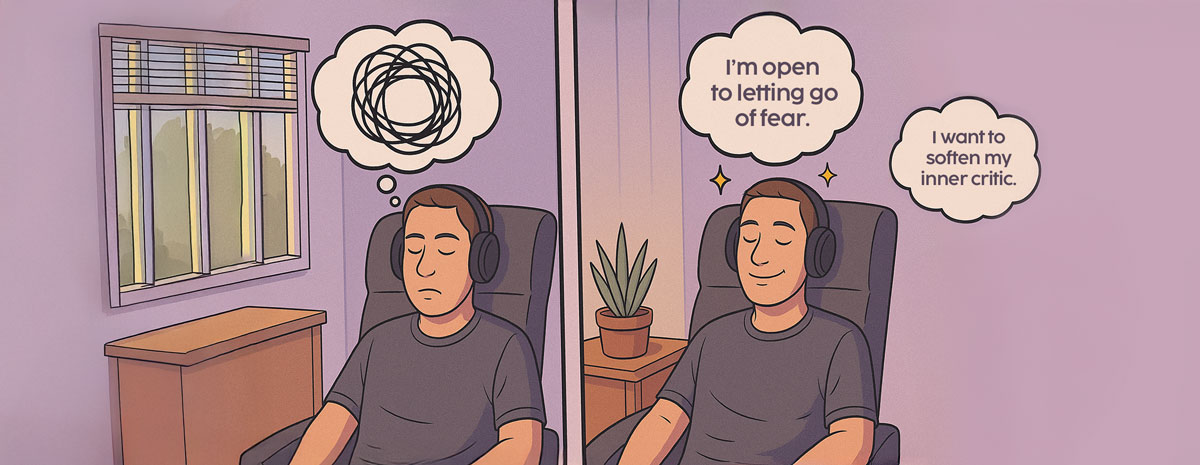Ketamine IV Therapy and the Ventral Vagal State: How Mindset Shapes Treatment Outcomes

Move Patients into the Healing Zone with Ketamine IV Therapy
Understanding the Ventral Vagal State and Its Role in Patient Outcomes
Ketamine IV therapy has emerged as a promising intervention for various mental health conditions. While its pharmacological effects are well-documented, the role of the autonomic nervous system, particularly the ventral vagal state, in influencing treatment outcomes is gaining attention. Understanding and supporting this physiological state can enhance the therapeutic potential of ketamine.
When the Nervous System Feels Unsafe, the Brain Can’t Integrate
In ketamine IV therapy, many patients arrive in states of heightened stress or shutdown - trapped in a nervous system loop of fight, flight, or freeze. You’ve seen it in your practice: shallow breathing, muscle tension, guarded affect. And while ketamine opens a neuroplastic window, the state of the nervous system determines how fully a patient can engage with and benefit from that change.
While ketamine reliably increases neuroplasticity, the nervous system’s state can help determine whether that flexibility becomes lasting change.
The Nervous System Hierarchy in Action
Polyvagal Theory offers a framework to understand this. Developed by Dr. Stephen Porges, this theory explains that our autonomic nervous system responds to safety and threat through a hierarchy:
- Dorsal Vagal: Shut down, collapse, numbness
- Sympathetic: Fight or flight, anxiety, hypervigilance
- Ventral Vagal: Social connection, calm, receptivity
While ketamine can disrupt rigid patterns and enhance neuroplasticity, a patient’s physiological state can help determine whether that flexibility translates into long-term change.
The Intersection of Ketamine IV Therapy and the Ventral Vagal State
Ketamine induces a state of increased neuroplasticity, allowing the brain to form new neural connections. However, the effectiveness of this neuroplastic window can be influenced by the patient's autonomic state.
When patients are in the ventral vagal state, they are more likely to feel safe and connected, potentially enhancing their ability to process and integrate therapeutic experiences. Conversely, if a patient is in a sympathetic or dorsal vagal state, they may be less receptive to the therapeutic benefits of ketamine.
Why the Ventral Vagal State Matters in Ketamine IV Therapy
The ventral vagal state - also called the “social engagement system” - is where the magic happens. It’s the state where people feel safe, grounded, and emotionally available. In this zone, patients are more likely to process insights, explore emotions, and rewire patterns.
But patients don’t always arrive here naturally. Many enter sessions stuck in sympathetic overdrive or dorsal collapse.
Emerging research suggests that mindset tools may help support patients entering into the ventral vagal state through variety of techniques.
Supporting the Shift: From Defense to Receptivity
At Limitless, we design tools that help patients shift into ventral vagal states - before, during, and after ketamine IV therapy.
Using guided imagery, breath cues, positive suggestion, and narrative pacing, patients are gently led out of stress states and into connection.
Here’s how our approach helps rewire the nervous system:
- From freeze to presence
Gentle body awareness cues and grounding imagery help patients exit shutdown and re-enter the moment. - From anxiety to openness
Soothing tone, breath pacing, and predictable rhythm calm the sympathetic state and invite softening. - From defense to integration
Affirming language helps patients feel emotionally safe enough to process and explore.
This isn’t about effort. It’s about the right input at the right time.
Why This Matters:
While clinicians may not always have the capacity to guide mindset during sessions, passive tools can provide meaningful support without adding to their workload.
When patients feel safe, calm, and emotionally supported, they can access deeper levels of openness during ketamine treatment - and return from that experience with greater clarity and integration. These aren’t surface-level shifts. When patients are gently guided into regulation, their nervous system becomes more receptive, their emotional defenses soften, and the mind becomes a more fertile ground for change.
It’s not about doing more - it’s about creating the right conditions. And that starts with what patients hear, feel, and sense during the most neurologically open moments of their care.
Mindset Medicine
Limitless isn’t just another meditation app. It’s built for ketamine therapy - crafted with neuroscience in mind, and designed for how real clinics operate.
With passive, session-compatible audio and clinical insight built in, it helps your patients move into states where change is possible and integration is accessible.
Whether you're working with first-timers or seasoned psychonauts, the state of the nervous system is always the bridge between medicine and mindset.
Want to See What Limitless App Can Do for Your Patients?
Get a free patient-ready Comfort Menu, patient support materials, provider onboarding, and clinical resource sheets in our free intro kit here: Download the Free Intro Kit
Explore Next Steps
Schedule a Discovery Call
See how Limitless can fit into your clinic’s workflow — helping patients engage more deeply in treatment, regulate their nervous systems, and sustain progress between sessions.
How to Support the Ventral Vagal State in Ketamine Therapy- with Limitless App
1. Set the Tone Before Treatment
Use Chill Music or a Journey Macrodose Intro to help patients ease into a calm, regulated state before infusion begins. These audio experiences gently support the nervous system without requiring any active participation.
2. Create a Safe, Sensory-Friendly Space
Dim lighting, weighted blankets, eye masks, and the Enhanced Comfort Menu can all promote parasympathetic activation and comfort during treatment.
3. Use Journey Macrodoses In-Session
These immersive audio experiences are designed to ease dissociation transitions, increase a sense emotional safety, and gently guide patients into openness and receptivity during the ketamine window of flexibility.
4. Support Neuroplasticity After Treatment
Recommend Mindset Microdoses in the 72-hour post-treatment window. These short audio tools help patients practice metacognitive skills, build emotional resilience, and anchor cognitive shifts while neuroplasticity is most active.
Want to read more research about Polyvagal Theory and Its Clinical Applications? See below:
1. Polyvagal theory champions the measurement of vagal tone as a new index of stress vulnerability and reactivity: Read more here.
2. What is polyvagal theory?
Polyvagal Theory emphasizes the role the autonomic nervous system - especially the vagus nerve - plays in regulating our health and behavior. Created and developed by Stephen Porges, PhD, the theory describes the physiological/psychological states which underlie our daily behavior as well as challenges related to our wellness and mental health. Read more here.
Frequently Asked Questions (FAQs) About Ketamine IV Therapy, Ventral Vagal State, and Mindset
Answers to common questions about how nervous system regulation and mindset tools may enhance the effectiveness of ketamine therapy - during and after treatment.
The ventral vagal state is a physiological condition characterized by feelings of safety, connection, and openness. It is associated with the activation of the parasympathetic nervous system and is crucial for social engagement and emotional regulation.
Being in the ventral vagal state can enhance a patient's receptivity to ketamine therapy by promoting relaxation and openness, facilitating better integration of therapeutic experiences.
Yes, with guidance and practice, patients can learn techniques such as breathwork and mindfulness to access the ventral vagal state, both during therapy sessions and in daily life.
Yes, various resources, including guided imagery recordings and relaxation exercises, can support patients in reaching the ventral vagal state.
Absolutely. The ventral vagal state plays a vital role in overall emotional well-being and can benefit individuals in various therapeutic contexts.
Polyvagal Theory is increasingly used as a framework for understanding the connection between the nervous system and emotional regulation, especially in trauma-informed care. While it offers valuable insights, its mechanisms and clinical applications are still being researched and are not yet universally adopted across all areas of mainstream medicine.
Final Thoughts
How To Integrate Limitless App Into Your Practice
Whether you're exploring mindset support for the first time or ready to roll it out across your treatment rooms, we’ve made it simple to begin. Each kit is designed to help your team introduce Limitless with ease.
Kit
1-Month License
for Patients
for Patients











